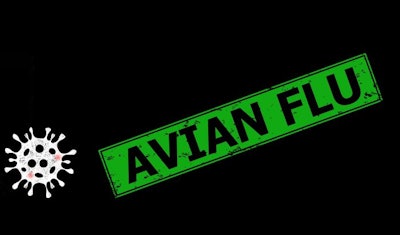
In the Philippines, the state and provincial governments are currently juggling two contrasting goals. While maintaining adequate supplies of poultry products to the population at a fair price, they need to minimize the risks of spreading the highly pathogenic avian influenza (HPAI) virus.
At the start of 2022, the H5N1 virus variant was detected in the country for the first time. In the meantime, it has spread to infect poultry on both of the main islands — Luzon and Mindanao. More than 100 outbreaks involving around 300,000 head of the nation’s poultry have been officially registered with the World Organisation for Animal Health (WOAH) this year.
Earlier this month, HPAI was suspected at a farm in Central Luzon, reported the Philippines News Agency (PNA). After the infection was confirmed, birds at the premises near to San Fernando city area in Pampanga province were destroyed. Authorities imposed a ban on all poultry products into and out of the area.
As more outbreaks are confirmed in the Philippines, authorities in Iloilo City imposed a 30-day ban on movements of all live poultry and their products from HPAI-affected areas of Luzon and Mindanao. The city is a key center for trade in the Visayas region, according to PNA, and the main aim of the restrictions was to ban “balut” — a popular local delicacy comprising embryonated duck eggs. Despite the overall ban, the provincial government continues to allow transshipments of hatching eggs and day-old chicks through its port and airport.
In Central Visayas, the same source reports that the authorities in Negros Oriental now requires all domestic birds to be tested before entering or leaving the province.
Meanwhile, to maintain the supply of poultry products and stable prices, the national Bureau of Animals Industry at the Department of Agriculture in Manila is easing the restrictions on inter-island trade. However, PNA reports, this applies only to day-old chicks, hatching eggs, and point-of-lay pullets with appropriate disease-free certification from Luzon.
In the last few days, a senior Bureau official has announced that surveillance will be increased. Applying to all provinces in the Philippines that border those with confirmed outbreaks, he said that this would represent an early warning system.
According to PNA, the country’s poultry supply situation is finely balanced. Demand for chicken has risen along with the reopening of the economy following the COVID-19 pandemic. At the same time, poultry farmers are facing exceptional increases in cost of production as the prices of imported corn and soy rise.
HPAI in Taiwan’s native chickens, wild birds
In Taiwan, one further outbreak of HPAI linked to the H5N2 virus variant has been reported.
According to the recent WOAH notification, native chickens at a farm in Changhua county tested positive for the virus in mid-June. Of the 16,410 birds at the premises, 4,200 died, and the rest have been destroyed.
Since November of 2022, there have been 35 reported outbreaks linked to this virus in the territory. Directly impacted have been around 462,000 poultry in several counties.
Veterinary authorities have also registered with WOAH the reemergence of an H5N1 HPAI virus in the wild bird population. At the end of May, a number of wild birds found dead in Hualien county tested positive for this virus. However, as no further cases have been detected since then, the agency has declared the situation “resolved” to WOAH.
High risk of HPAI ahead for South Africa
According to the South African Poultry Association (SAPA), there is a high risk of the nation’s poultry farmers facing HPAI outbreaks this winter. The industry body is advising its members to remain alert for signs of the disease, and to continue complying with HPAI protocols.
In the 12 months to March of 2022, 3.7 million of the nation’s poultry were culled as a result of HPAI. Of these, SAPA reports that 2.9 million of these birds were laying hens, and 800,000 were broilers. These figures represent 9.6% and 0.6% of the two total populations, respectively. Of the 145 outbreaks recorded, 68 were in Western Cape, 39 in Gauteng, and 18 in KwaZulu-Natal.
Based on notifications to WOAH, 85 outbreaks linked to the H5N1 HPAI virus have been confirmed on South African farms since March of 2021. These have directly involved around 4.77 million poultry. Most recently reported was an outbreak at a Gauteng farm in mid-April this year.
Furthermore, the same virus has also been detected in wild birds and backyard poultry flocks over this period. Latest to be registered with WOAH were cases among 176 non-commercial poultry in the city of Tshwane in Gauteng early last month.
HPAI resolved in Namibian wild birds
During the first week of July, the animal health agency of this southern African state officially declared the HPAI situation in wild birds “resolved.”
According to WOAH notifications, the H5N1 virus serotype was identified as the cause of death of more than 5,500 Cape cormorants between February and May of 2022.
Most recent African country to register its first outbreaks of HPAI linked to the H5N1 variant was the Republic of Guinea. In April and May of this year, poultry on six farms near to the capital city tested positive for this virus serotype.
Previously in 2022, HPAI outbreaks have been reported also in Cameroon, Gabon, Ghana, Niger, Nigeria, and Togo.
View our continuing coverage of the global avian influenza situation.















